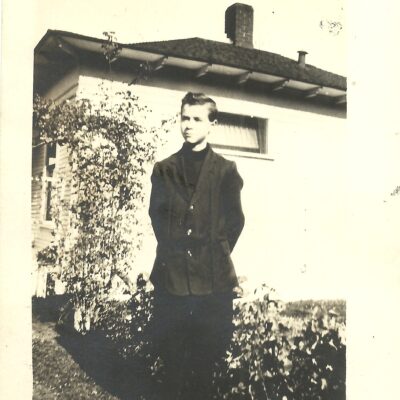Community
Behind The Finds, Part 6: Don Wolford and his three-piece suits

Community Sponsor
Community stories are made possible in part by Peninsula Light Co, a proud sponsor of Gig Harbor Now.
Part 1 Behind the Finds | Every picture has a story
Part 2 Behind the Finds: Every picture has a story (even if I have to make one up)
Part 3 Behind the Finds | Georg, Brigida and John Wolford
Part 4 Gig Harbor Now and Then | Behind the Finds: Chuck Sharman
Part 5 John and Leta Wolford at 5611 S. Oakes Street in Tacoma.
Part 6 Don Wolford and his three-piece suits (this story)
In our last installment of Behind the Finds, we identified the Wolford family from the photos we found, and followed their move from Kansas to Tacoma as blacksmith John Wolford sought new work opportunities. John got a job at Tacoma’s Northern Pacific Railroad maintenance shops, an industrial campus that was relocated just beyond city limits to allow for expansion. Settling into a modest home at 5611 South Oakes St. — which still stands today — John and Leta Wolford and their three surviving children found themselves on the cusp of change in South Tacoma’s push to develop and serve its growing industrial workforce. In photos, this sepia-toned era shows the family home while news clips and public records help shape a story of the children attending school, socializing at parties and discovering who they really were amid the uncertainties of growing up.
In today’s story, we talk about John and Leta’s eldest child, Donald Solomon Wolford. He’s a focus because our photo collection was likely passed down through him and his future wife, Doris Persing, to their daughter, Jean Wolford. As such, we have a ton of pictures of him.
(Check out the story of how we discovered the photos here).
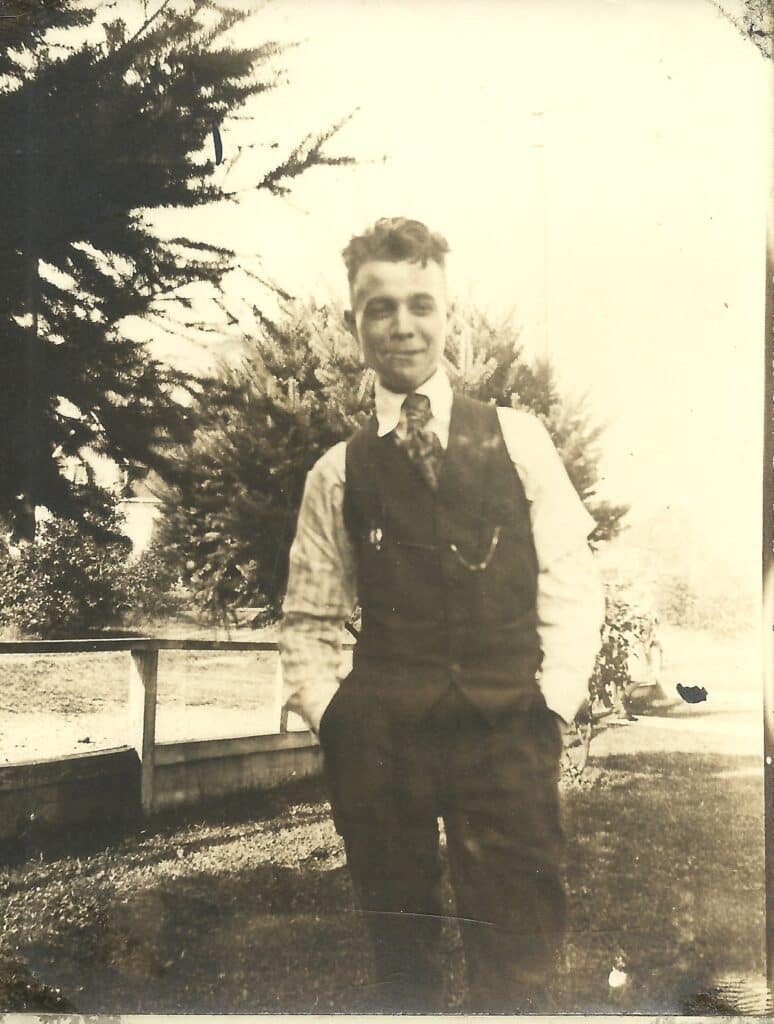
Classic Don Wolford look with tie and vest. Circa 1918.
Donald Wolford
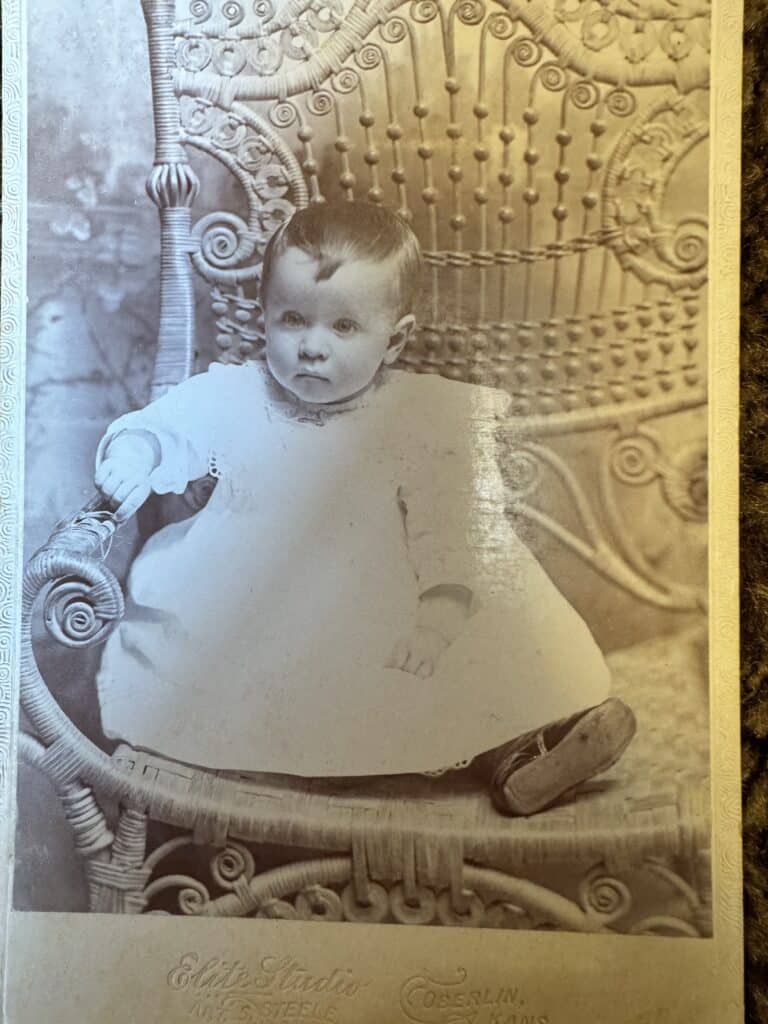
Baby Don, circa 1898.
Donald “Don” Wolford was born on May 26, 1898 in the railroad town of Selden, Kansas. Settlers plotted a townsite there a decade earlier after a regional railway company extended its route through the area.
Don was the oldest of the four Wolford children and named after John’s adoptive father back in Nebraska — Solomon Wolford. That Solomon took John in at age seven after both of John’s parents died in quick succession. John and his many siblings were originally born with the German last name Hauswirth. But with his adopted family, he and two of his sisters took on their last name — Wolford.
Don’s brother Clyde was born Nov. 16, 1900, in Kansas but sadly, he died at 15 months old on Feb. 16, 1902. The depiction of a little lamb is carved into his headstone at the Selden Cemetery, signifying the loss of a small child.
A third sibling, Guida, was also born in Kansas, just two months after Clyde passed away. Her birthday is April 25, 1902. Finally, fourth child and youngest of the siblings, Marion, was born in Tacoma on Oct. 16, 1907, shortly after the family moved there.
Don’s signature style
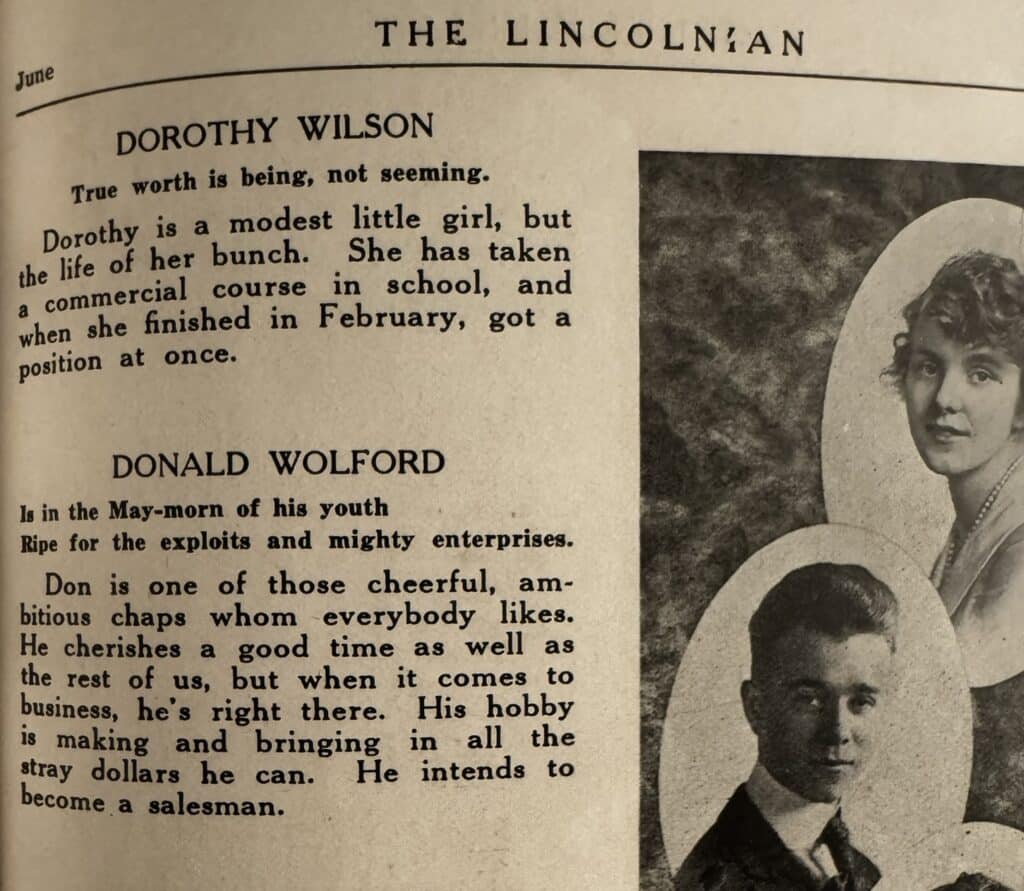
Don Wolford’s senior portrait entry in The Lincolnian 1918 commencement annual.
Growing up, Don attended South Tacoma schools: Edison Elementary, Grey Middle School, and finally Lincoln Park High School, where he graduated as a senior in 1918. We were lucky enough to find many of his report cards saved among the Wolford family photos. In the ninth grade, Don took English, Algebra, German, “M. Training,” Mechanical Drawing, Bookkeeping and Gym. An average score of at least 70 for the semester meant a passing grade, which Don achieved in all subjects that year except for Algebra, where he scored a 65. He did best in “M. Training” and Bookkeeping, scoring 88 and 82, respectively. But Don wasn’t the type to just show up for a grade and head back home. He was always into something, whether it be school performances, leading Bible studies at church or attending neighborhood parties with friends.
If you flip open his senior annual, you’ll find Don is described as “cheerful” and “ambitious,” and always hustling for extra cash:
“DONALD WOLFORD — Is in the May-morn of his youth. Ripe for the exploits and mighty enterprises. Don is one of those cheerful, ambitious chaps whom everybody likes. He cherishes a good time as well as the rest of us, but when it comes to business, he’s right there. His hobby is making and bringing in all the stray dollars he can. He intends to become a salesman.”
– The Lincolnian, 1918
- A young Don at 5611 S. Oakes St. circa 1915
- Don Wolford and future brother-in-law Martin Persing. Circa 1918.
Even then, Don Wolford knew exactly who he was and what he wanted to be. Every picture of him practically screams confidence. I don’t know how else to say it, but this guy thought he was hot sh*t. In the pictures we’ve studied for the series, his whole delivery carries certain level of confidence. And it’s his half-smile, mischievous (and annoyingly charming) level gaze that suggests Don knew he looked the part.

Don Wolford in the mountains. Circa 1918.
Even in pictures of him holding a baby on a beach or standing among friends outdoors, Don looked like he was ready to pitch an insurance policy on the spot. Much of that is because Don almost always rocked a three-piece suit. In the dozens of pictures we have of him, only three show him not in a suit as a young man: two baby photos and a high school-era snapshot of him in a knitted sweater (but still in a tie) while sitting on a grassy slope in the mountains.
Yep, he sure was dressy. And don’t forget the hat — Don was one for sporting a snazzy hat on any given day. In fact, the photos show Don in a hat when he was barely into double digits, and then they remained atop his head straight through his golden years. That feels pretty on-brand for him. though. Especially because, as a teenager, Don worked (and modeled) for Tacoma’s M&M Hat Shop on Pacific Avenue, a street that, at the time, buzzed with new trends and retail fashion brands.
When Tacoma was still figuring out what kind of city it wanted to be, it appears Don knew exactly who he was. It makes you wonder if the guy even owned a plain T-shirt?! Jokes aside, whatever Don was doing — it worked. The kid went on to become a real estate and insurance broker, married his longtime girlfriend, scooped up a waterfront property and led several business groups.
School-age Don
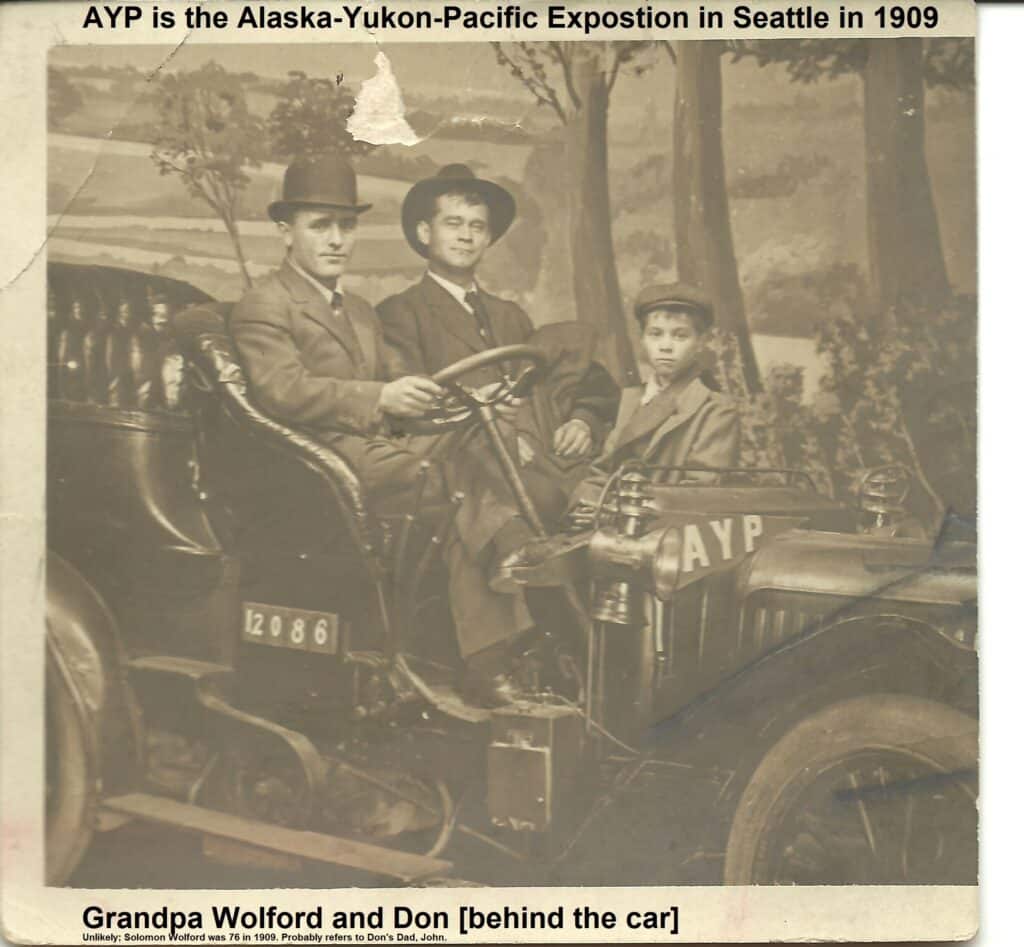
From left: an unidentified man, John Wolford and 11 year old Don attend the 1909 Alaska-Yukon-Pacific Exposition in Seattle. They’re posing at an automobile exhibit.
It all started (at least in the pictures we have) when little Don was around 11 years old. There’s this great photo of him looking all dapper standing next to his dad and an unidentified guy sitting in a turn-of-the-century automobile at the 1909 Alaska-Yukon-Pacific Exposition in Seattle — a world’s fair showing off the Pacific Northwest’s post-gold rush industries.
The next year, in 1910, Don’s name pops up on the society page of The Tacoma Daily Ledger because he went to a Halloween party thrown by South Tacoma girls Esther Jensen and Vera Reed. For context, if the girls were his age, the party was put on by 12-year-olds. The article reads:
“The young hostesses had omitted nothing to make a success of the occasion. Unique and jolly Halloween sports were enjoyed. After which the guests repaired to the dining room, where supper was served. The table was attractively decorated, black cats and witches being strung from the chandeliers to the corners of the table.”
– The Tacoma Daily Ledger, Oct. 30, 1910
Six years later, he and his sister Guida went to a surprise party for a fellow Oakes Street resident, and he also joined a gathering at classmate Esther Jensen’s home. Doris was also in attendance as reported in the News Tribune, Feb. 5, 1916
As a teenager, Don was into more than just parties: he also participated in school plays, leading his school in cheers at the football game and writing and selling ads for his high school literary journal. In 1916, he played an Indigenous character in the Lincoln High student opera “The Captain of Plymouth” as reported in the News Tribune. By 1917, Don was elected advertising manager of “The Tahoma,” the joint literary journal of Lincoln and Stadium high schools, where Doris was a staff writer. That fall, Don was one of three “Yell Leaders” at Lincoln’s first big football game against Stadium High school— a huge deal that promised to draw a packed crowd, as noted in the Tacoma Daily Ledger’s Oct. 4, 1917 edition.
As a yell leader, Don was part of the original hype squad for school sports teams before the modern version of cheerleaders became widespread. And how amazing is this story about the game with its funny little anecdote about the star player banned from the game for eating pie:
“Considerable doom was manifested at Lincoln High school yesterday and a big hole was made in the lineup when it was announced that “Kip” Revelle star halfback and end had been eating pie outside the school contrary to rules and Revelle was suspended by Principal W.W. Parker but may get back today. Revelle will probably take one of the halves if he gets into the game. Lincoln students expect to cheer their favorites with a burst of noise when they appear on the field tonight. Three yell leaders Leon Soklich, Don Wolford, and Lloyd Cravens were elected yesterday and will lead the vocal exercises. It is expected that the Blue and Gold will have their noise makers on the job as well. Since this is the first interschool game of the season, it is expected to bring out a crowd.”
– The Tacoma Daily Ledger Oct. 4, 1917.
Don + Doris = 🖤

Swoon-worthy pic of Doris and Don circa 1918.
In 1918, Lincoln Park High School parted ways with its shared “Tahoma” journal with Stadium, and produced its own publication for the first time — “The Lincolnian.” Don and Doris helped put together the senior commencement edition
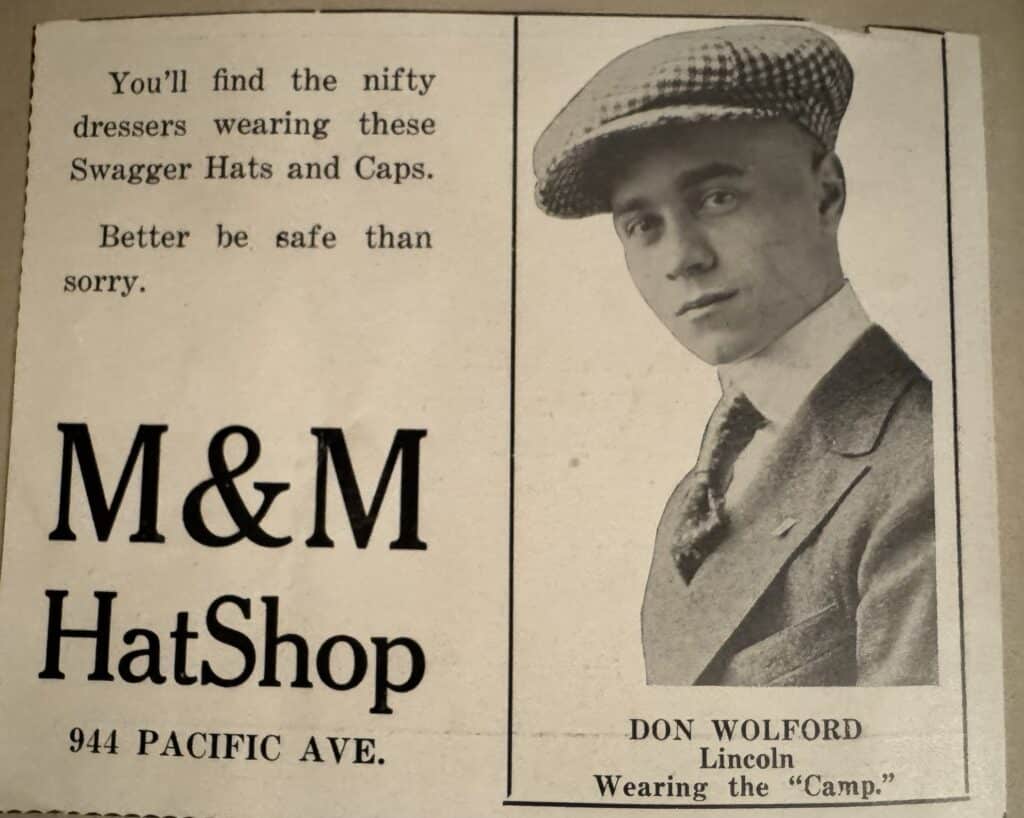
that year. The articles contained little inside jokes involving one another, fitting nicely with the comedic tone of teenage writers’ carried throughout the class book. The journal also featured Don in an advertisement for his employer, the M&M Hat Shop, as he modeled the “Camp Hat,”perfectly perched on his head. Naturally, Don was perfect for the ad, looking totally in his element.
In an era where South Tacoma was still emerging as an important region, and the reputations of its residents still being defined, Don wore his ambitions like a well-pressed shirt. And the sheer consistency of which he kept this up is astonishing. Don’s choice to dress his best seems to say that he was looking to sell more than just stuff — he was selling himself as someone who knew what he wanted from life.
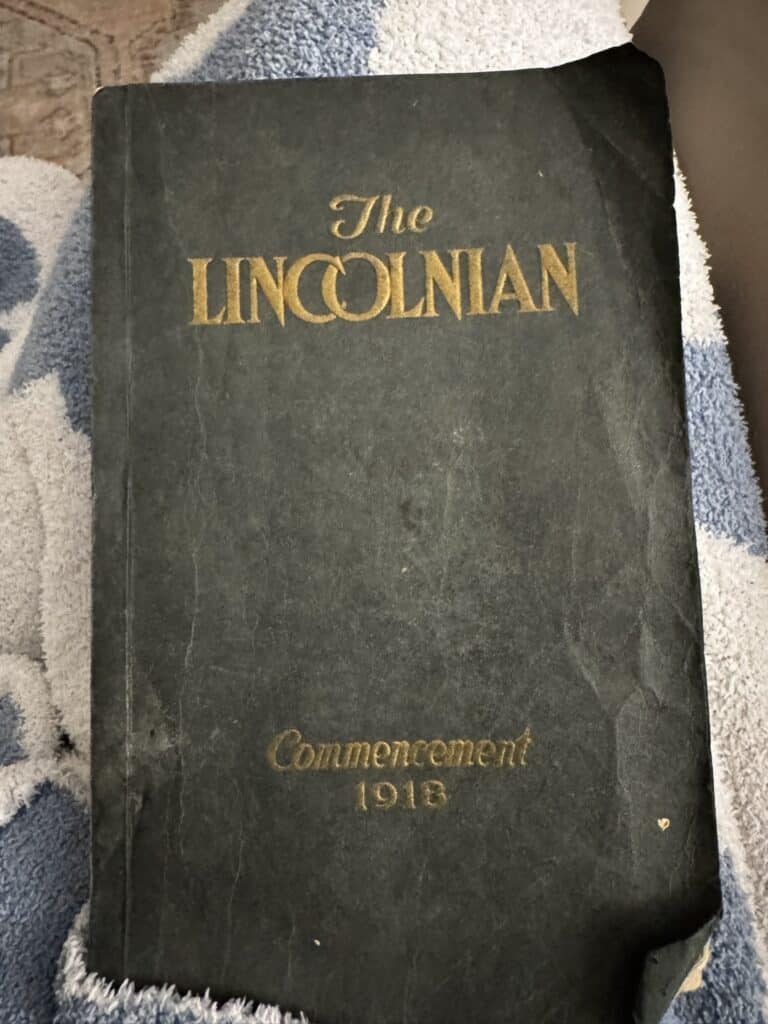
Among those wants was Doris, the theater-loving, tennis-playing, and social best-friend-to-many daughter of Tacoma city finance clerk B.B. Persing and housewife Marie Persing. Having been in the same grade and attending all the same schools, Don and Doris dated at least throughout high school and possibly before. But Doris wasn’t just an object to be desired — from what I’ve read about them, their coupling very likely operated on an even playing field as Doris was someone who could hold her own. I’ll get more into Doris’ life in the next series installment, including swoon-worthy details from her 1918 handwritten high school scrapbook that include handwritten dance cards attached with ribbon to tiny pencils. For now, a brief sneak-peak comes in the description of Don and Doris’ wedding on Nov. 9, 1921, three years after high school.

The News Tribune, Nov. 8, 1921
The event was a society-page masterpiece in both the Tacoma News Tribune and The Tacoma Daily Ledger. The TNT article called the couple “popular” with many local friends. The Ledger described lavish scenes of white chrysanthemums, evergreens, and pink asters adorning the Persing residence where the wedding took place:
“A profusion of native greens and rose-pink asters being used. The bridal party made a beautiful picture as they stood under 21 dainty white pergola, over which clambered trailing vines, with here and there clusters of mountain ash. Feathery ferns stood on either side of the pergola and huge baskets of pink asters were used about the rooms.”
-The Tacoma Daily Ledger, Nov. 13, 1921
For her part, Doris wore a midnight blue suit with embroidery and a copper-colored hat. Don’s sister Guida was her maid of honor, and Martin Persing, Doris’ older brother, was Don’s best man. After a little honeymoon up in Seattle and British Columbia, the pair came back to live at Don’s parents’ house at 5611 South Oakes Street while his folks left for a year-long stay in Arizona and California, the Ledger reported.
In 1923, Don and Doris were in their first home, and their only child, Jean Wolford, was born. There’s a great undated photo of Don standing on the beach, casually holding a cigar … and a baby (quite possibly little Jean). And, of course, Don is dressed in a suit and a hat. Yes, even on the beach with a baby:


Ad in the Tacoma Daily Ledger, Oct. 12, 1934.
As an adult, Don didn’t waste any time launching his business as a real estate and insurance broker. Later, his 1975 obituary when Don died at age 77 said he ran it for four decades. In 1934, a newspaper ad ran for Don’s South Tacoma Investment Company offering “Insurance of all Kinds” from their office on South 54th Street, as seen in the Ledger. Doris worked there, too.
The later years
Throughout the 1940s, Don leveled up. He and Doris bought a Cromwell house in 1941. Then, in 1942, he was identified as president of the South Tacoma Business Men’s Association in an image featured in the Tacoma Public Library’s digital collection on Tacoma businesses.
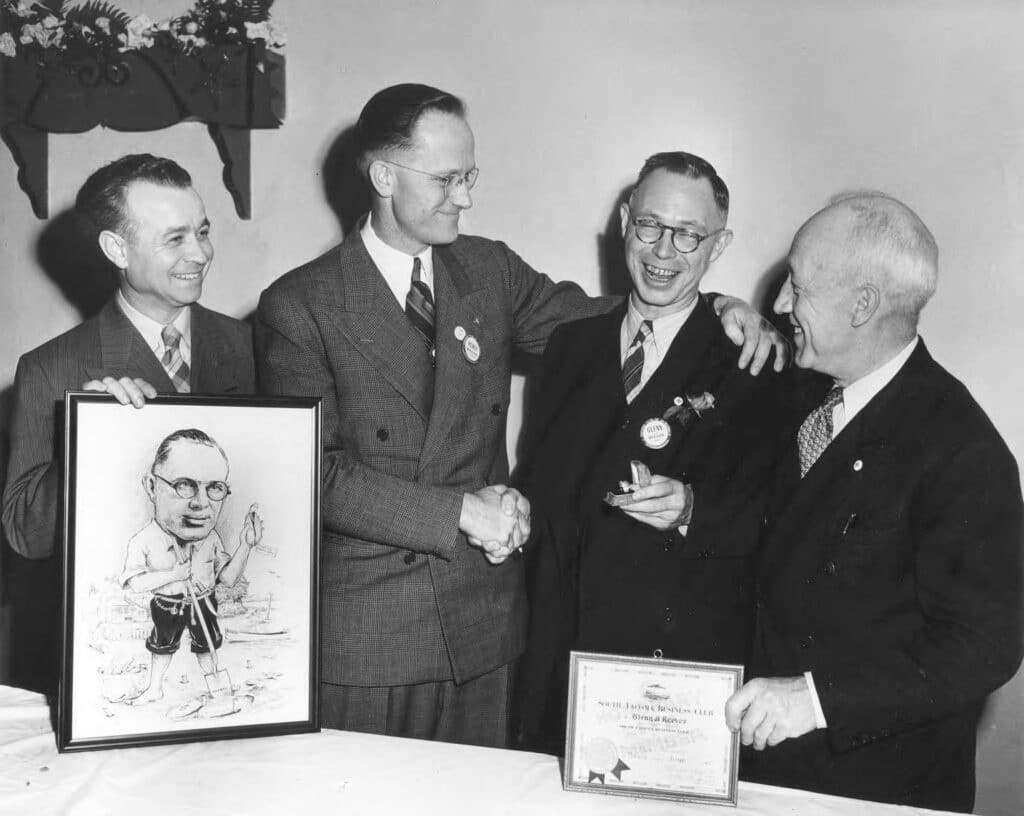
From left to right are businessmen Don. S. Wolford, Percy C. Rollins, Glenn A. Reeves, and W.D. Lyness. (Photo D12934-3, Richards Studio collection, Tacoma Public Library)
Its caption described the retirement party for Tacoma banker Glenn A. Reeves. Attendees presented an ink caricature drawing of Reeves digging for clams at his home on Henderson Bay. In one of the photos, Don is sporting a big grin while holding the framed drawing. The gift seemed on-brand for Don and his crowd that seemed to favor a work-hard-play-hard lifestyle with incomes that allowed for the luxuries of summer beach houses and weekend clam-digging. Not at all surprising, Don and Doris got their Cromwell house the year before that to experience their own beach days. Fittingly, they also strung a rustic, hand painted plank sign across the front yard that read “Don’s Digin’s.”
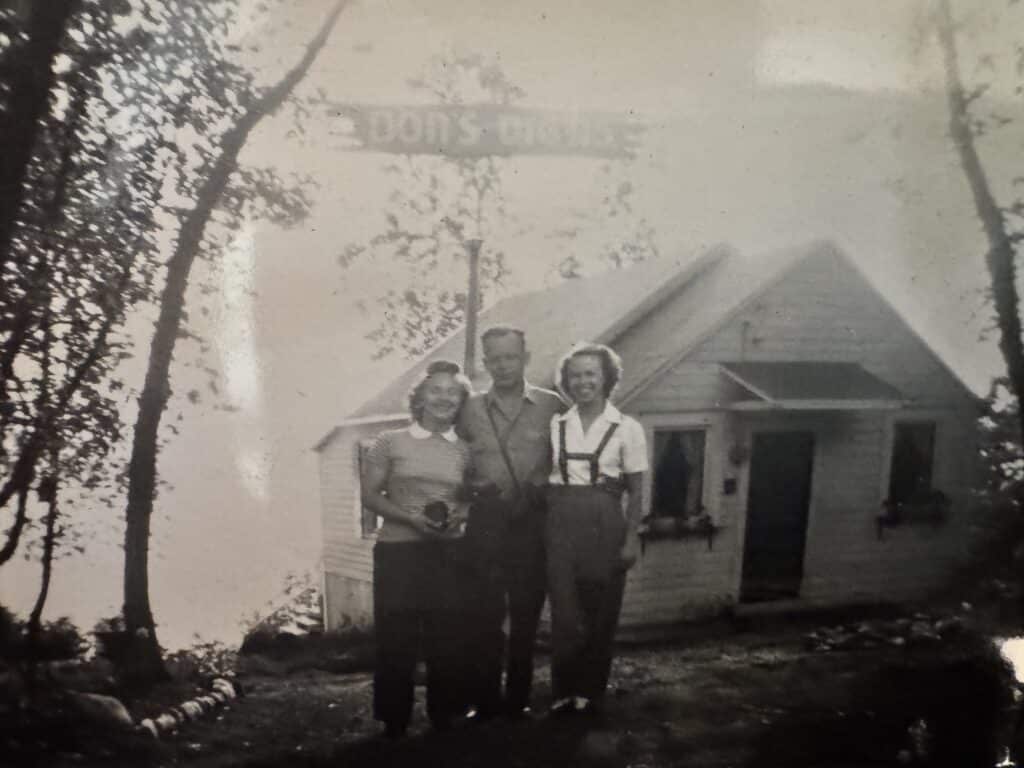
Unidentified guests posed beneath the famous “Don’s Digin’s” sign at the Wolfords’ Cromwell beach house. Mid 1900s.
By 1954, the Tacoma City Directory listed Don and Doris as living at the Cromwell house, though their agency was still listed in South Tacoma. The photos from Don and Doris’ later years are the kind you wish every family had — backyard parties on comfy, cushioned patio furniture and posing for pics in goofy hats and tons of laughter; Christmas trees decked out in tinsel, Don piloting a little motorboat next to Doris in a sun hat, looking oh-so-happy. Another photograph of a dinner party is captioned as their 30th wedding anniversary celebration. They’re laughing at a dining table with friends and family on all sides.

Don and Doris on their boat, likely near Cromwell.
Don passed away on September 9, 1975, in Tacoma at age 77, from gastrointestinal bleeding and “severe brain syndrome,” according to his death certificate. That’s likely related to what we call Alzheimer’s or dementia nowadays. Don’s obituary in The News Tribune said he was a 50-year member of the Clover Masonic Lodge (where Doris’ dad, B.B. Persing was also a leader), a past president of the South Tacoma Businessmen’s Club, and a regular at the local Kiwanis club.
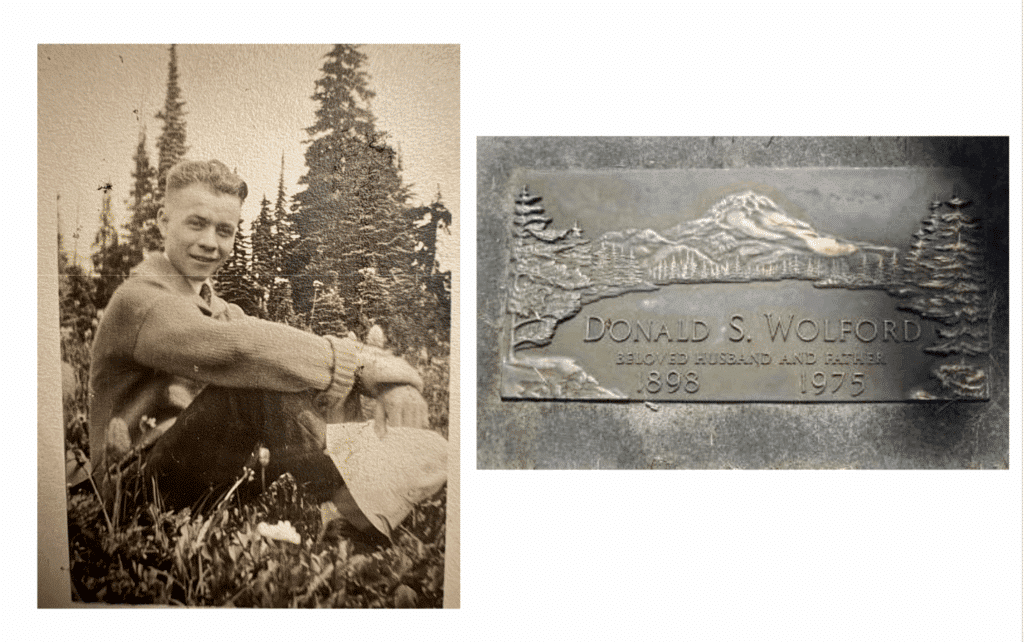
He’s buried at Mountain View Memorial Park next to Doris, who died 15 years later in 1990. Their flat, matching grave markers lay alongside each other as a perfect last nod to all those years Don and Doris spent as a team—first in their high school writing endeavors, then running a business while raising a daughter, and finally enjoying their beach house and watching grandkids open Christmas presents under the tree.
Don’s story is like a snapshot of South Tacoma itself. Both started out rural and developed with purpose amid a burgeoning landscape of industry and commerce. Don built a life grounded in community, hard work, and what seems like an innate determination to belong at the heart of it all. And that’s exactly who he became.
Stay tuned for Part 7 of our Behind the Find Series …


